Ain't Nothin' But a House Party - A chat with Bruce Weinroth, producer of the Show Stoppers classic
From its roots in the Philly Sound to a second life on the Northern Soul scene and its resurrection by the J. Geils Band
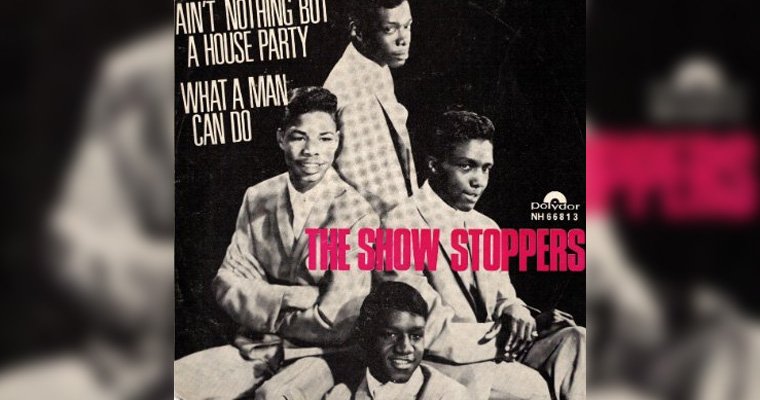
Anyone who grew up listening to pop or R&B radio in Philadelphia (as I did) in the late 1960’s is familiar with The Show Stoppers’ raucous hit, “Ain’t Nothin’ But a House Party”. Frequenters of the Soul Source website may be familiar with the song from its release on Beacon in 1968 (more on that below).
In 2017, the song was featured as the lead cut on Kent Soul’s excellent compilation, Nothing But a House Party – The Birth of the Philly Sound 1967-1971, a Compilation of the Year pick by London-based Soul Brother Records.
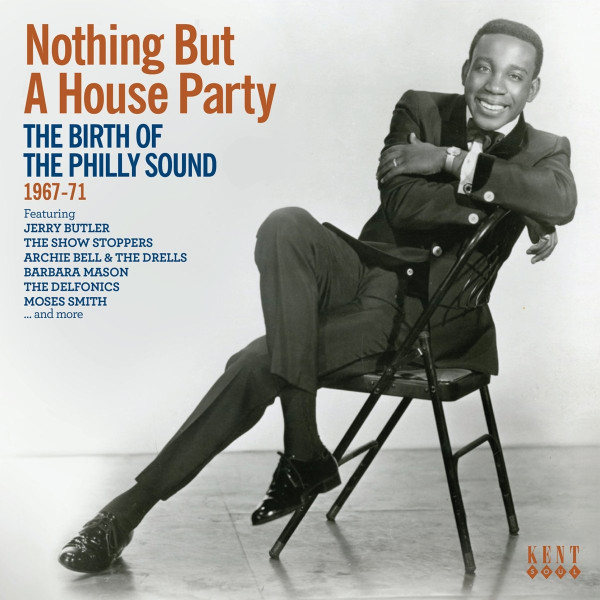
As Tony Rounce of Kent Soul explains in his excellent liner note to the release, “In the same way the Motown Sound really came together after the company started recording almost exclusively in its own premises, the Philly Sound quickly took shape once Joe Tarsia, the former chief engineer at Cameo-Parkway Studios, opened Sigma Sound in 1968.”
“House Party” is a perfect pick for leading off the compilation, as it was recorded shortly before the opening of Sigma Sound, but with the involvement of many of the key players who created the Philly Sound.
Being a Philadelphia native of that era, and an R&B devotee, I had the 45 releases of the song on the Showtime and Heritage labels in my collection but never knew the full story of the song’s origin and history – until an unexpected meeting with the producer of the song on, of all places, a golf course, led me on a journey into the history of this soul classic.
McCall Field Golf Club is a private club outside Philadelphia, but it is anything but a posh enclave for the upper classes. It was built in the 1920s by the local electric utility as a place for its employees to play the newly popular game. Nowadays, it retains its blue collar feel, and accepts members who don’t work at the utility, which is how I ended up there
One day a couple of years ago, I joined up with a group of fellows I did not know half way through my round. One of the guys was talking animatedly about a recent show by The Temptations.
I idly wondered who of the original group was still touring under the name.
The guy responded, “Oh, it’s still Otis Williams’ group. I know him, man, he’s a friend of mine, I know all those guys.”
The name hit me. “You mean, Otis Williams, as in Otis Williams and the Charms?”
He stopped and looked at me. I had been outed as an R&B nut.
“Yeah! You know Otis Williams and the Charms? Hey, I was in the record business,” he said, “I produced a song. You know ‘Ain’t Nothin’ But a House Party?’ That’s my song!”
I was impressed. During a few subsequent rounds, I got more of the story from the guy, Bruce Weinroth. Then one winter day, we sat down in the club’s deserted grille room and talked – he talked, I listened - about how it all happened. (Bruce also brought his scrapbook, the source of several of the pictures here).
Bruce got his start in the music business as an undergraduate at Temple University in Philadelphia in the mid-1960’s.
“When I was in college, I used to book bands for my fraternity house at Temple, PI Lambda,” Bruce explains. “We used to book bands like Kenny Gamble and The Romeos. Then sometimes the schools used to ask me to do a show.”
When Bruce graduated, he worked managing a clothing store, while continuing his booking work.
Bruce recalls: “My father owned a chain of clothing stores. I ran one store for him called Richie Allen’s Dugout [named for the famous Phillies slugger] in Germantown. I was still booking the bands on the side.”
One day in 1967, a group of young men were in the store, and while checking out the new fashions, became intrigued with Bruce’s phone conversations.

Bruce remembers: “These guys walk in the store and they hear me on the phone, talking about a booking. They say, ‘Hey, you in the music business? We all in a group.’ Of course I said ‘Yeah!’”
The group, The Show Stoppers, two sets of brothers from Germantown High in Philadelphia, had strong bloodlines, as one set, Alex and Laddie Burke, were younger siblings of Solomon Burke, who had emerged as a star with Atlantic Records, one of the singers credited with creating the “Soul” sound.
“I put them on a show with The Vibrations, Jackie Wilson and The Magnificent Men, at Philadelphia Textile College,” says Bruce.
The Vibrations were a dynamic live act and had been at the root of a music sensation in 1964 with their recording of “My Girl Sloopy”, produced by the great Bert Berns. The song was renamed “Hang On, Sloopy” when The McCoy’s version hit #1 in 1965, and was recorded by over twenty artists within the next year.
Carl Fisher was the lead singer for The Vibrations, and after watching The Show Stoppers, he pulled Weinroth aside.
Bruce explains: “Carl Fisher says to me, is that your group? I say, yeah. He says, come here a minute, let’s talk. He says, I write, I got songs. So, the three of us, Carl Fisher, Joe Thomas [The Vibrations guitar player] and I, sat around and came up with the song.”
The inspiration for the title and refrain came from a catch-phrase used by legendary Philadelphia DJ Sonny Hopson (The Mighty Burner, as he was known).
Bruce chuckles. “Sonny Hopson used to always say on the radio, ‘Ain’t nothin but a house party’. So we played with that idea.”
The result was a funky, upbeat number, “Ain’t Nothin’ But a House Party”, credited to Del Sharh and Joe Thomas. (Fisher used the pseudonym Del Sharh on the composition credits).
Weinroth had no experience at record production. As he recalls, “I didn’t know a thing about producing records. I went to my father [Melvin Weinroth], he was a business man. I said, ‘Dad, I need some money, I want to do a record.’ He said, ‘You’re doing a record? What do you know about doing a record?’”
But Bruce knew enough to get all the right people involved. Weinroth took the group to Cameo-Parkway’s studio and produced the session (under the name Bruce Charles) and enlisted stellar session men, including Carl Chambers on drums, who went on to play with Gladys Knight and the Pips; Mike Terry on baritone sax, already a Motown stalwart; well-known Philly player Mike Pedicin on tenor sax; and Joe Thomas, who went on to perform with Curtis Mayfield and The Impressions. The horns were arranged by Thom Bell, who was on the verge of his work creating the “Philly Sound” with The Delfonics, Jerry Butler and many others for the Philly Groove label and Kenny Gamble and Leon Huff’s Philly International label (and a host of other labels, large and small).
But this recording had none of the sweet, string-laden orchestration of Bell’s later work. This was a hard-driving dance number that echoed the energy of other soul/funk songs on the charts then, like “Funky Broadway” by Dyke and the Blazers and “Boogaloo Down Broadway” by the Fantastic Johnny C, with a bit of The Miracles “Goin to a Go Go” mixed in. It has a live, it-really-is-a-party sound, the background jive—“What’s happenin’ baby?”, “Goin’ to a Party!”—presaging the party chatter of songs like Marvin Gaye’s “What’s Going On”.
With baritone sax punctuating the verses, a chorus of overlapping call-and-response vocals repeating the lines “Ain’t nothin but a party/Ain’t nothin but a house party”, and a punchy horn riff leading back to the verse, the beat is irresistible.
Bruce got to put his own personal stamp on the recording. “I’m on the record; at the beginning, when they say ‘Hey baby, it ain’t nothing but a house party’, that’s me. That was my idea.”
Much of the group was, as Bruce says, “All those guys from MFSB, before they became MFSB”, referring to the name given to the cadre of studio musicians who would become to Gamble & Huff’s “Philly Sound”, what The Funk Brothers were to Motown. (MFSB stood for “Mother, Father, Sister Brother”, according to the “clean” version of the name’s origin, invoking the closeness of the musicians; alternatively, it meant “mother-fucking son-of-a-bitch”, in tribute to the prowess of the group’s members.)
The engineer was Joe Tarsia who would go on to found Sigma Sound, the home base for Gamble & Huff’s Philadelphia International records, and the source for over 200 gold and platinum awards with an extensive client list that begins with Aretha Franklin and ends with ZZ Top (including David Bowie’s Young Americans).
The single, released on Showtime Records, the label created by Bruce and Irvine Weinroth (Bruce's brother), was a strong regional hit, breaking the top ten on pop and soul stations in Philadelphia, and reaching #2 at WRAW in Reading, Pennsylvania.
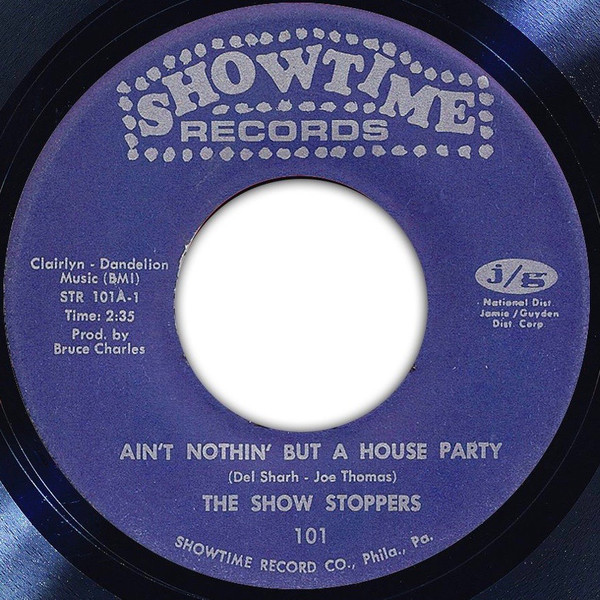
Bruce recalls: “My father knew Georgie Woods real well. [Woods was a key DJ at WHAT, one of the two big soul stations in Philadelphia, at that time; he may be better known to Philadelphians for his many years at WDAS]. And Ernie Fields at WDAS, he loved it, he was the first to play it.
“He got into it, my father. To the point that Thom Bell said to him, ‘Why don’t you pay me a salary, and I’ll do records.’ My father said, ‘I don’t think so.’’”
Bruce worked a distribution deal with Harold Lipsius at Jamie/Guyden and the song hit the top 40 in Harrisburg, Columbus and Cleveland. The song did not break out nationally, hitting only #118 on the Billboard charts in May 1967, but it was early days.
(Note: Jamie/Guyden created records on its own two labels and was also a distributor for a wide range of local and national record labels. For an interesting tale of how Frank Lipsius (Harold’s son) helped the producers of the hit movie The Green Book feature authentic R&B/Soul songs of the era without breaking the bank, by plumbing the depths of the Jamie catalog, check out this article by Jonathan Takiff from the Philadelphia Inquirer ("How a small Philadelphia record company gave an Oscar contender its sound").
In January 1968, Milton Samuel, an Antiguan-born businessman who had started Beacon Records in London, was visiting the US and heard the song. Weinroth leased the master to Samuel and “House Party” became the first (and only) hit for his label. Released in February 1968, the song reached #11 in the UK Singles Charts and became a favorite of the Northern Soul crowd at such clubs as the Twisted Wheel and the Blue Note. The Show Stoppers travelled to the UK and made three appearances on Top of the Pops.
![]()
Bruce recalls the trips to England with the band: “In England, they were like the Temptations were here.”
The song’s popularity led to faithful cover versions by several British artists around this time, including The Tremeloes, The Paper Dolls and Cliff Richard.
In April 1968, the song had another life in the US when Jerry Ross, a music industry hustler from Philadelphia, who had been the booth announcer on Dick Clarke’s American Bandstand before moving on to songwriting (co-authoring “I’m Gonna Make You Love Me” with a young Kenny Gamble) and production work (including “Sunny” by Bobby Hebb), bought the “House Party” master for his new Heritage label. The song fared better nationally, reaching #87 on the Billboard Charts.
The final big chapter in the song’s life came in 1976, when the J. Geils Band recorded the tune for their live album Blow Your Face Out, which reached the Billboard Top 40. The song received a lot of airplay and the single release reached #20 in Boston, the home stomping grounds of the band, and became the title song for the band’s recurring “House Party” tours.
Being recorded by the J. Geils Band was a stamp of authenticity, as the group, with ex-DJ Peter Wolf as lead singer, had made a practice of resurrecting obscure (to white audiences) R&B hits for a college-party crowd, including “So Sharp” by Dyke and the Blazers, “Looking for a Love” by The Valentinos, “First I Look at the Purse” by The Contours and “The Usual Place” by Don Covay.
Other artists who recorded the song in later years included Phil Fearon, whose house music version produced by Stock Aitken Waterman in 1986 reached #60 in the UK charts, and a more rocking cover in 1988 by British "supergroup" The Corporation.
“House Party”’s story has a “Twenty Feet from Stardom” vibe: The Show Stoppers family ties to a soul music legend; Carl Fisher’s link to the “Sloopy” sensation of 1965; a studio crew that became the foundation of the Philly Sound; and resurrection by a band second only to the Rolling Stones for bringing obscure R&B to a broader audience.
Bruce Weinroth retired from the music business not long after his time with The Show Stoppers. He works in the insurance industry and plays golf regularly at McCall Field. Although he regrets selling the master to Jerry Ross, Bruce kept the publishing rights to the song through his company, Clairelyn Publishing (shared with Jamie/Guyden’s Dandelion Music).
Relaxing in the empty grille room, he smiles. “Claire is my mom, Lynn is my wife—so Clairelyn. I still get royalties; and they’re not ten dollars, they’re thousands, every quarter. Sony Pictures used it in their movie Grown-ups II—they used the J. Geils version. And Toyota used it in a couple of commercials.”
“House Party” is still played regularly on oldies stations around Philadelphia and will forever be a key part of the heritage of the Philly Soul Sound. But it never would have happened if The Show Stoppers hadn’t been looking for some cool threads at Richie Allen’s Dugout one day in 1967.
Postscript:
In prepping this article for posting on the Soul Source site, I came across this thread on the various releases of the House Party 45 on the site, with more knowledgeable back and forth on master plates and matrix numbers than I can muster. I had come across the Party Time release in my research, but had never been able to determine how Party Time and Showtime related, other than they both were set up by the Weinroths. If I can nail Bruce down for another conversation, perhaps he can shed some light on that.
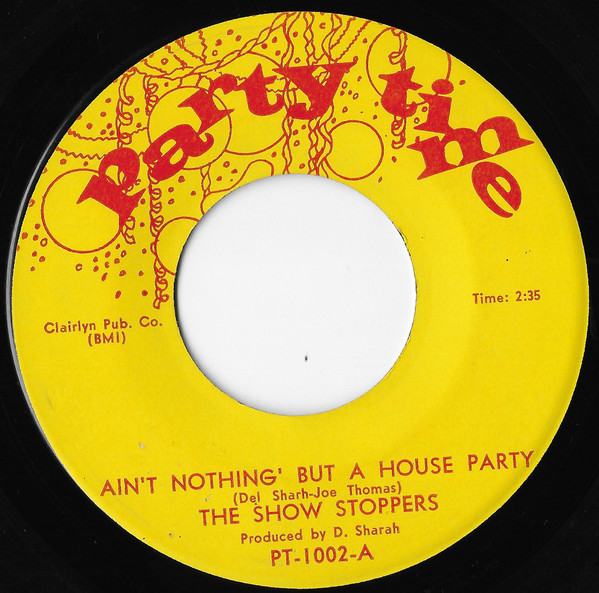
I was impressed by some of the releases pictured in the comments, especially the Frankford/Wayne acetate. I also enjoyed seeing the Collectables reissue on red vinyl. The Collectables label was created by Jerry Greene, who also founded the Lost Night and Crimson labels. Collectables used to have an office about a mile from my house in suburban Philadelphia.
I would also like to thank Max Ochester of Brewerytown Beats for his encouragement in reviewing early versions of this article. He runs a great record shop in Philadelphia and has been instrumental in promoting and reissuing Philly music. Max can be found here on the Soul Source site.
For other posts on music (and books and film), you can visit my website at joeleturner.wordpress.com, and use the “word-cloud” on the right side of the page to find posts about Soul, Jazz, Vinyl, etc.
-
 10
10
-
 3
3


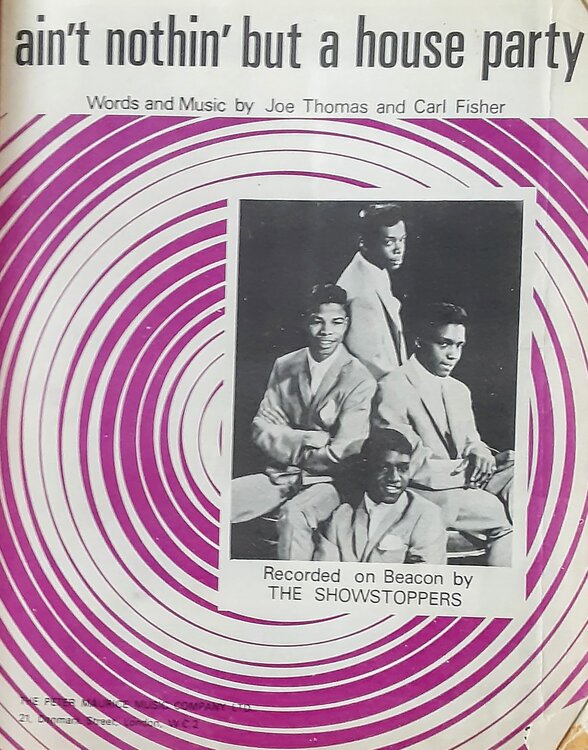
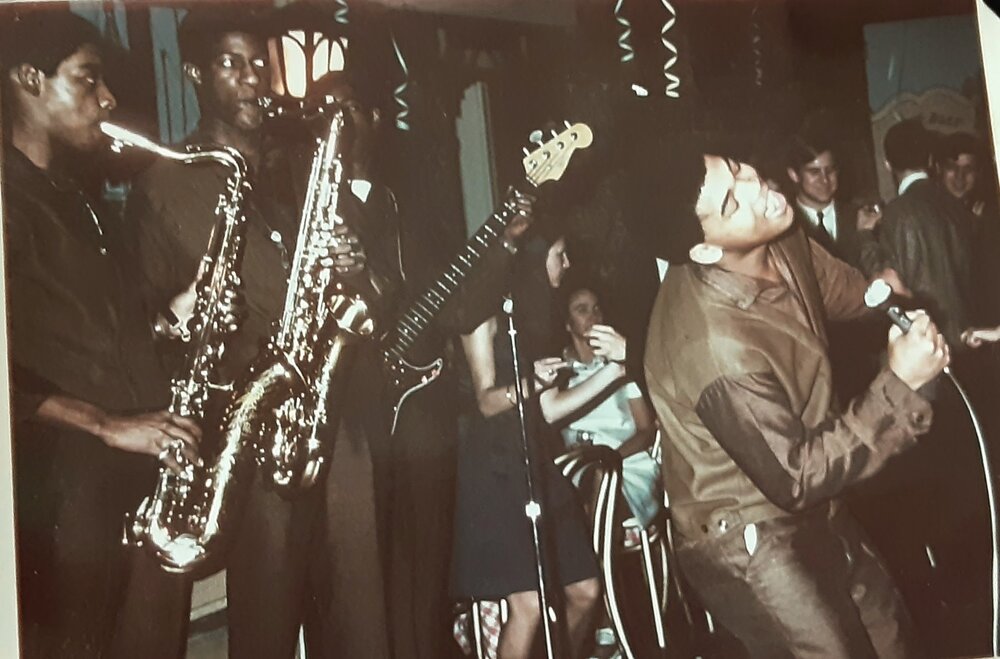

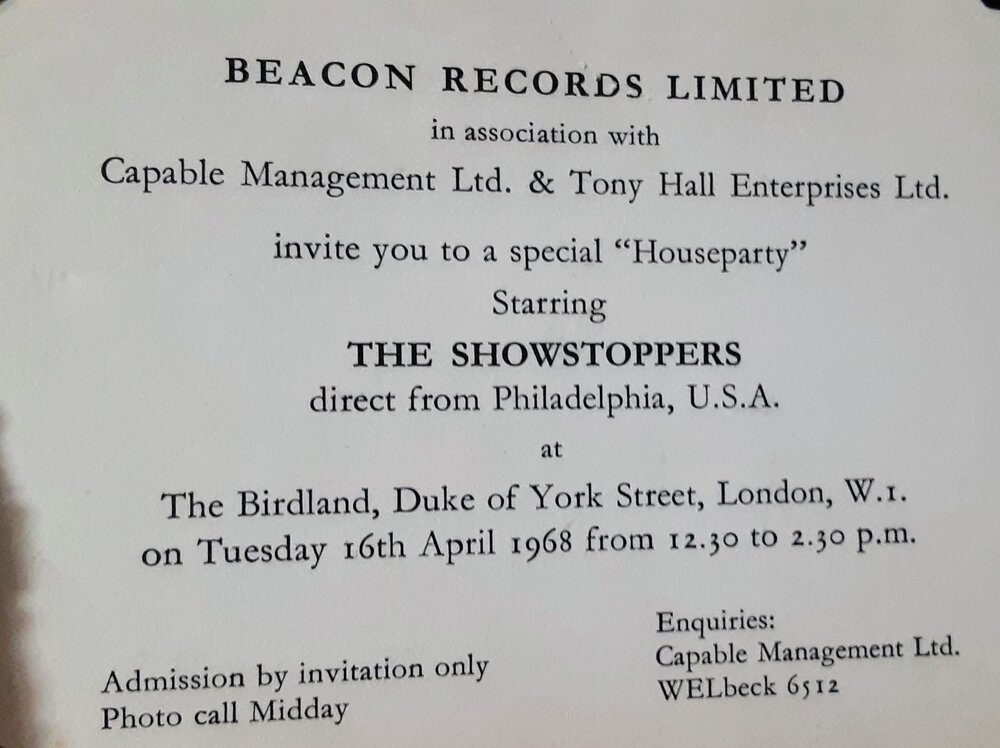

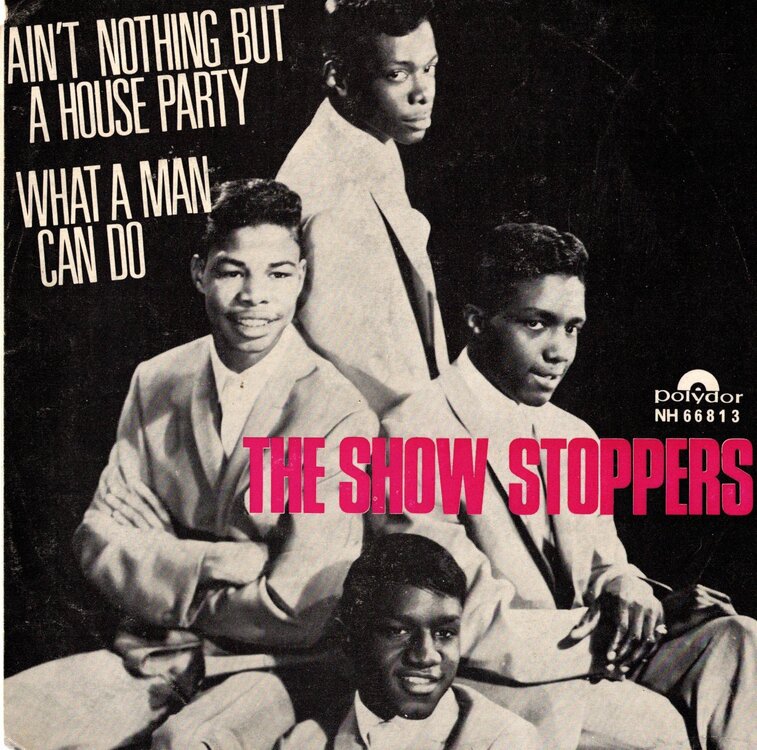
Recommended Comments
Get involved with Soul Source
Add your comments now
Join Soul Source
A free & easy soul music affair!
Join Soul Source now!Log in to Soul Source
Jump right back in!
Log in now!